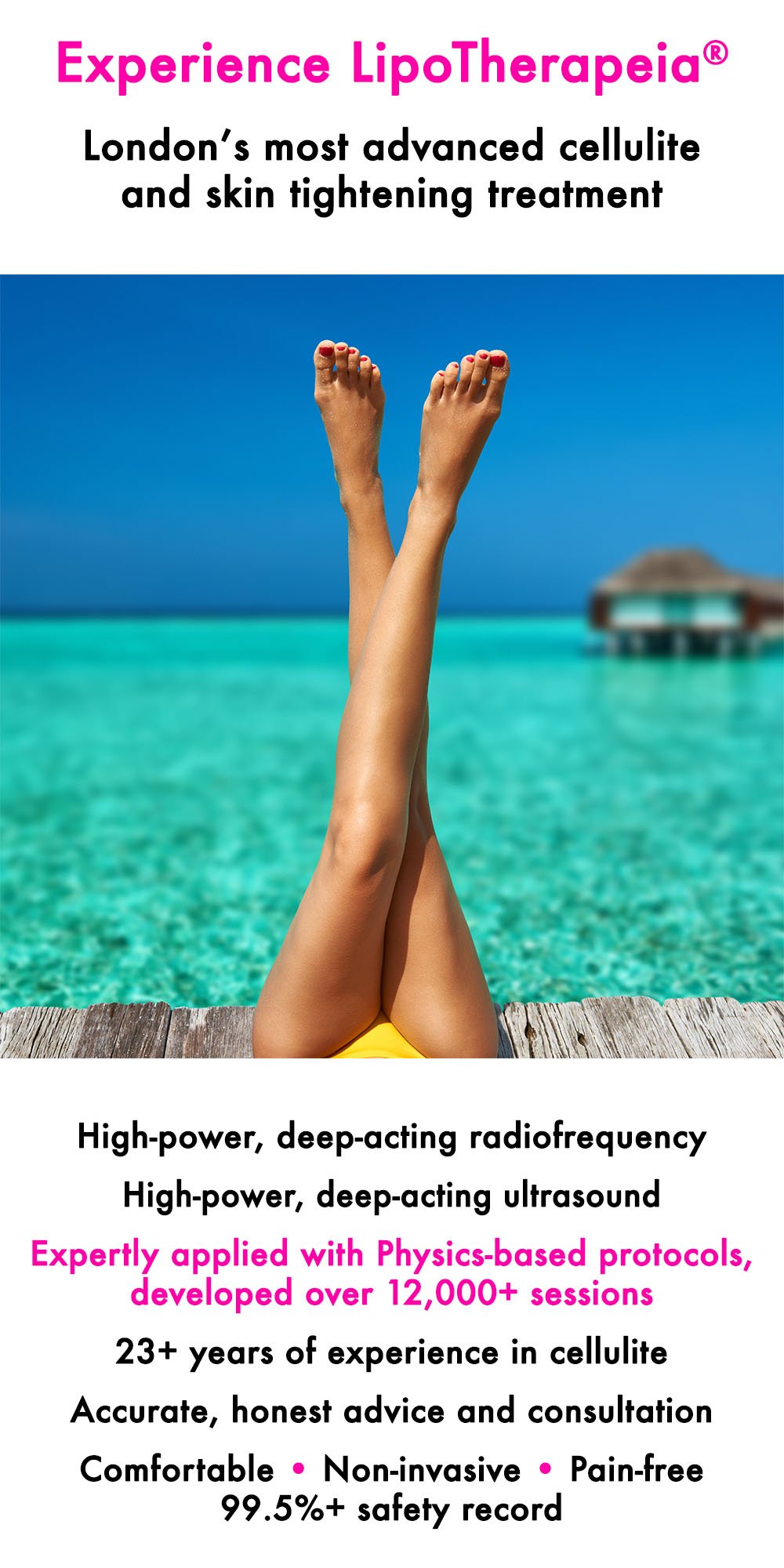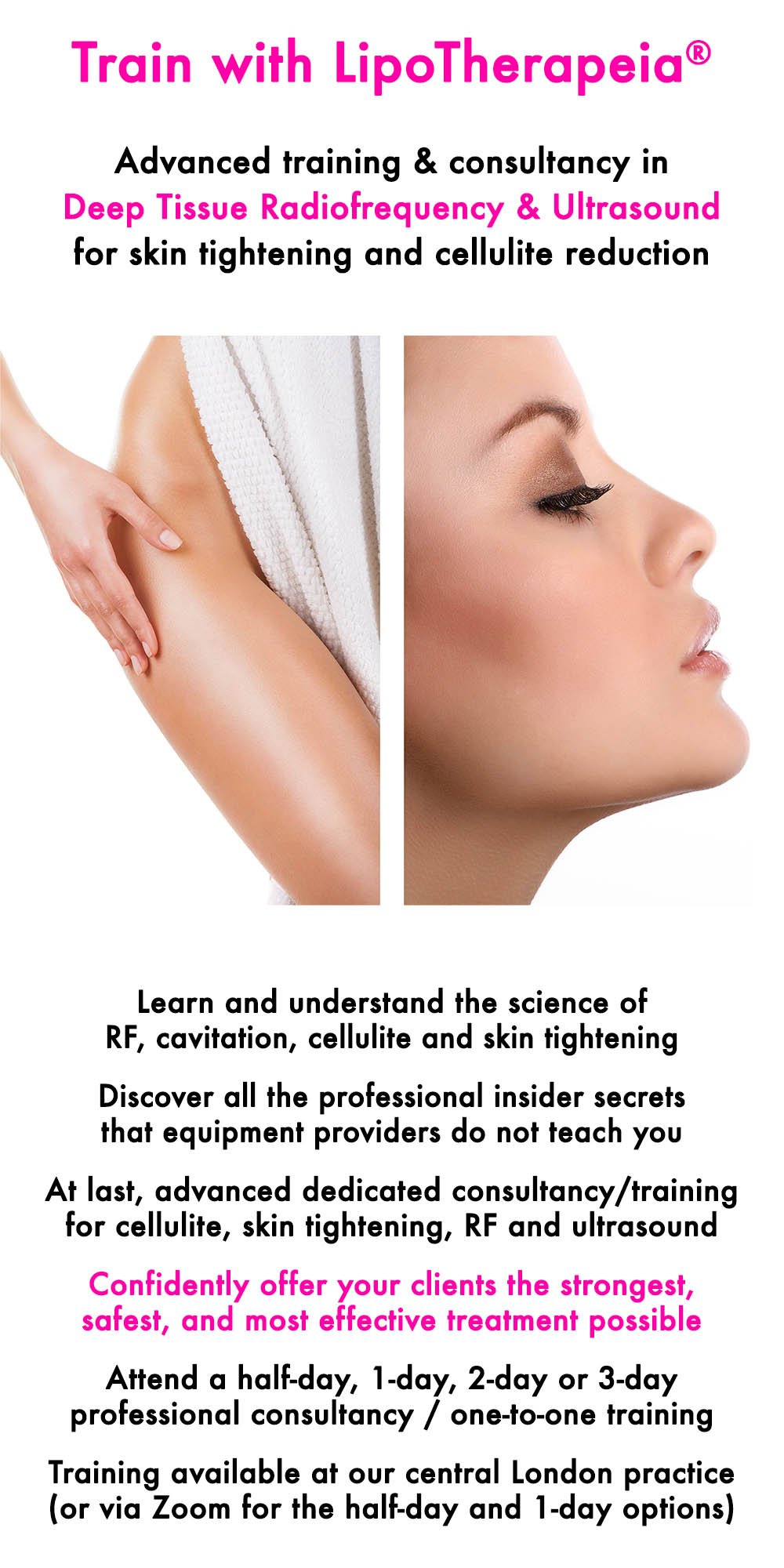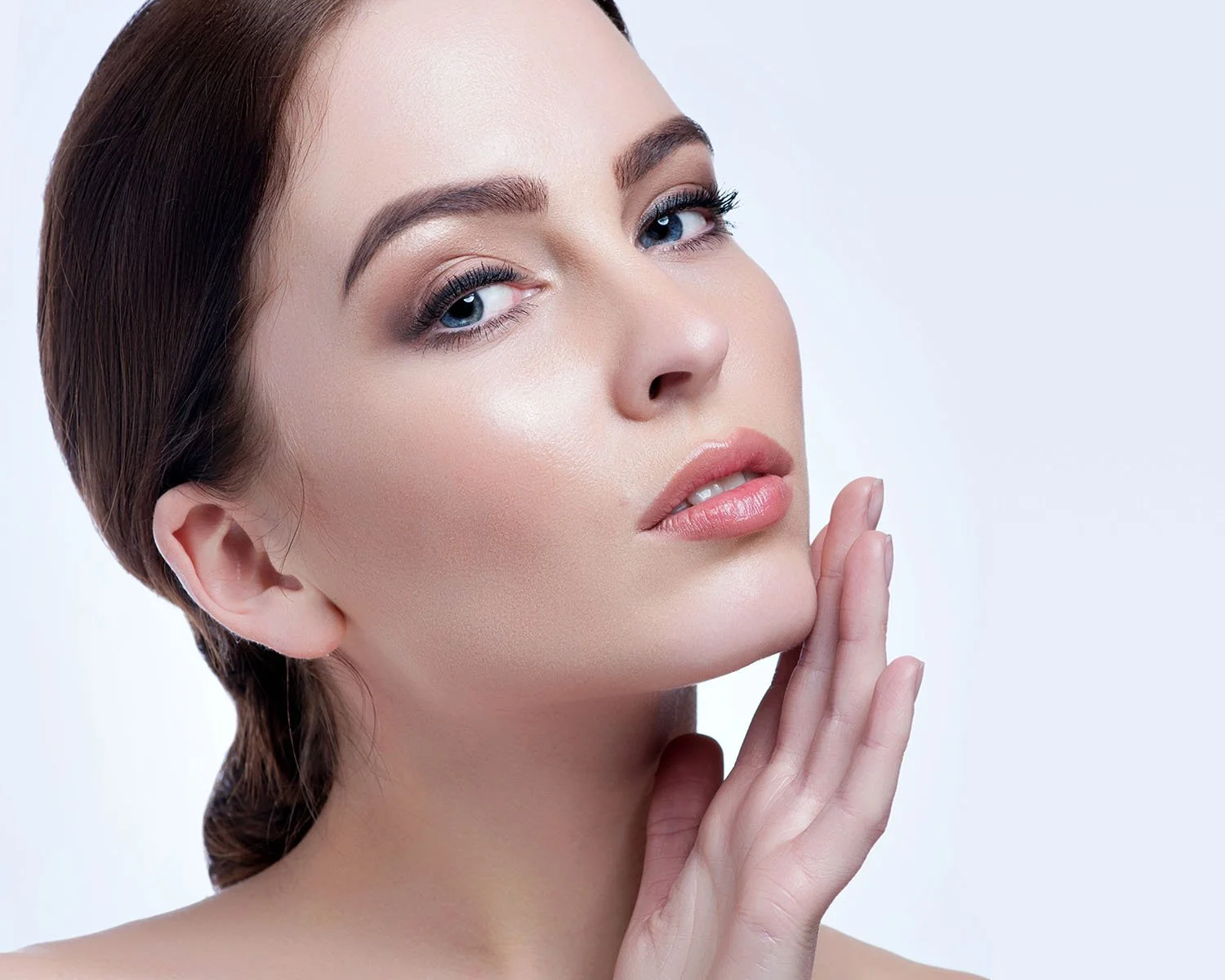LipoTherapeia & Celluence: how it all started
Treating cellulite naturally with safe with non-invasive technologies and natural anti-cellulite actives: an interview
What made you want to train in skin and body therapies?
How did you come across the combination of ingredients and technologies used in your LipoTherapeia treatment and creams?
How does the treatment work and why is it so effective?
Does the LipoTherapeia treatment work for all skin types, genders and ages? Is there anyone in particular that would see more benefits from the treatment?
We understand you are relaunching your home care products. Can you tell us more about them and what active ingredients make them so effective? Are you planning to launch any new therapies and if s what will they be?
What do you think of plastic surgery? With all the advances in technology do you think it is possible to achieve the same or better body modifying results with cosmetic surgery?
Do you think that there is a shift in trend within the cosmetic industry to use more natural ingredients? Do you think this trend will grow as new information and technologies are developed?
Check our professional consultancy in radiofrequency, ultrasound cavitation, cellulite and skin tightening
Treating cellulite naturally with safe with non-invasive technologies and natural anti-cellulite actives: an interview
This post comprises answers previously given for an interview to a magazine and was slightly adapted to become current for 2023. It highlights some key aspects of the LipoTherapeia treatments and the Celluence creams.
I hope you find it interesting.
Georgios Tzenichristos,
LipoTherapeia
What made you want to train in skin and body therapies?
It is not something that I pursued specifically, it just happened.
I used to work as a nutritionist and sports therapist and clients used to ask me about how to get rid of their cellulite. Nothing good was available those days (2001), so after a while I got interested, started researching, bought my first machine, then after a couple of years I invested in another one and then several more over the last two decades.
After the first couple of years in the industry (2003) I realised that there were no decent cellulite creams on the market for my clients to use, so I also started formulating creams to serve my clients better, which again grew and evolved over the last two decades.
How did you come across the combination of ingredients and technologies used in your LipoTherapeia treatment and creams?
I study, research and work hands-on with cellulite for more than two decades now, so over the years I have assessed all the important machines on the market (more than 100 over the years) and have gradually learned what really works and what doesn’t.
The same applies to active ingredients. While I was developing the Celluence cellulite creams, I assessed 450 ingredients and tried in the lab more than 200. I tend to look at both the available research and also real results with clients at the clinic to make my decisions about machines and ingredients.
How does the treatment work and why is it so effective?
Cellulite is a multi-faceted aesthetic condition, which means that no single approach can work effectively.
The LipoTherapeia® treatment provides the two strongest skin tightening / anti-cellulite technologies (deep tissue high intensity radiofrequency and deep tissue high intensity cavitation).
The combination of two technologies and multiple actives from the Celluence® creams act on all aspects of cellulite, for best results.
Does the LipoTherapeia treatment work for all skin types, genders and ages? Is there anyone in particular that would see more benefits from the treatment?
The treatment works on all skin types and genders.
The treatment is less effective after the age of 60, as the body responds much slower to any slimming / firming procedure.
The best results are seen by motivated people who also make an effort with healthy eating, exercise and alcohol avoidance, whilst receiving the treatments.
The worst results are seen by people who believe the tabloid hype about instant and permanent results without ever changing their lifestyle.
We understand you are relaunching your home care products. Can you tell us more about them and what active ingredients make them so effective? Are you planning to launch any new therapies and if so what will they be?
We have just launched a brand new cellulite cream, Celluence® Legs (the interview was taken in December 2020), based on a group of specially selected key active ingredients: asiatic acid, madecassic acid, asiaticoside, caffeine, forskolin, curcumin, EGCG, esculin and chlorogenic acid.
That was followed in 2021 by Celluence® Body, with cocoa flavanols, dihydroxyproline, medium-low weight hyaluronic acid, beta-sitosterol and wide-spectrum tocopherols.
The previous Celluence cellulite creams (Celluence® Phase One and Celluence® Phase Two) contained a total of 40 (forty!) natural actives. That was an amazing project with lots of fans, but the sheer number of actives made the products too expensive.
With the new creams we are focusing on the most crucial actives, for more impact, focused action and more economical prices.
I also constantly work at new iterations of the LipoTherapeia® treatment, however, no amazing new types of anti-cellulite technology has come out the last few years.
So we are sticking to the proven, tried and tested deep-acting, high-power radiofrequency/ultrasound and have have recently invested in new equipment that brings those technologies to their maximum capacity currently available anywhere in the world.
There is still some chance for improvement, but nothing better exists at the moment, worldwide, so it’s all about making the most of this technology with smart treatment protocols to maximise results.
I always look for new technologies and if some new technology is worthwhile (not just hype and waste of money for our clients), we will adopt it immediately. But at the most everything I try is pure hype, for the naive and the gullible (therapists and the public alike).
What do you think of plastic surgery? With all the advances in technology do you think it is possible to achieve the same or better body modifying results with cosmetic surgery?
Liposuction has its place for extreme fat volume, for which no non-surgical treatment can really work. However, it also leaves scars, makes cellulite look worse and can leave skin loose.
“Tummy tuck”, butt lift and thigh lift surgeries are quite often the only solution to severe skin laxity (skin hanging, basically), but large unsightly scars are the trade-off.
There are also three types of “cellulite surgery” but in most cases they make things worse than before, and I would personally never have any of them if I had cellulite. For extreme, deep dimples subcision cellulite surgery has its place, but for anything else I would pass.
In summary, for larger amounts of fat, very severe cellulite and very saggy skin, surgery is the only option.
In all cases, surgery just removes and cuts away, but it does nothing to improve the quality of the skin itself.
On the other hand, for most types of cellulite and for moderate skin looseness, a good non-surgical treatment that actually improves skin quality is the best possible option.
Do you think that there is a shift in trend within the cosmetic industry to use more natural ingredients? Do you think this trend will grow as new information and technologies are developed?
There is a clearly growing trend for naturals and I can only see this getting bigger. People move away from harsh chemicals and prefer to buy skincare products with more natural and softer ingredients.
However, as it always happens, there is a lot of hype and misinformation. Many products claiming to be “rich” in a specific “trendy” natural ingredient, when in reality they may contain as little as 0.01% of that trendy active.
Unfortunately, most people can not really know the difference, even when they look at the “INCI list”, as things can be easily camouflaged on the label, unless they are specialists in the field of naturals in skincare. This is a big let down for consumers.





